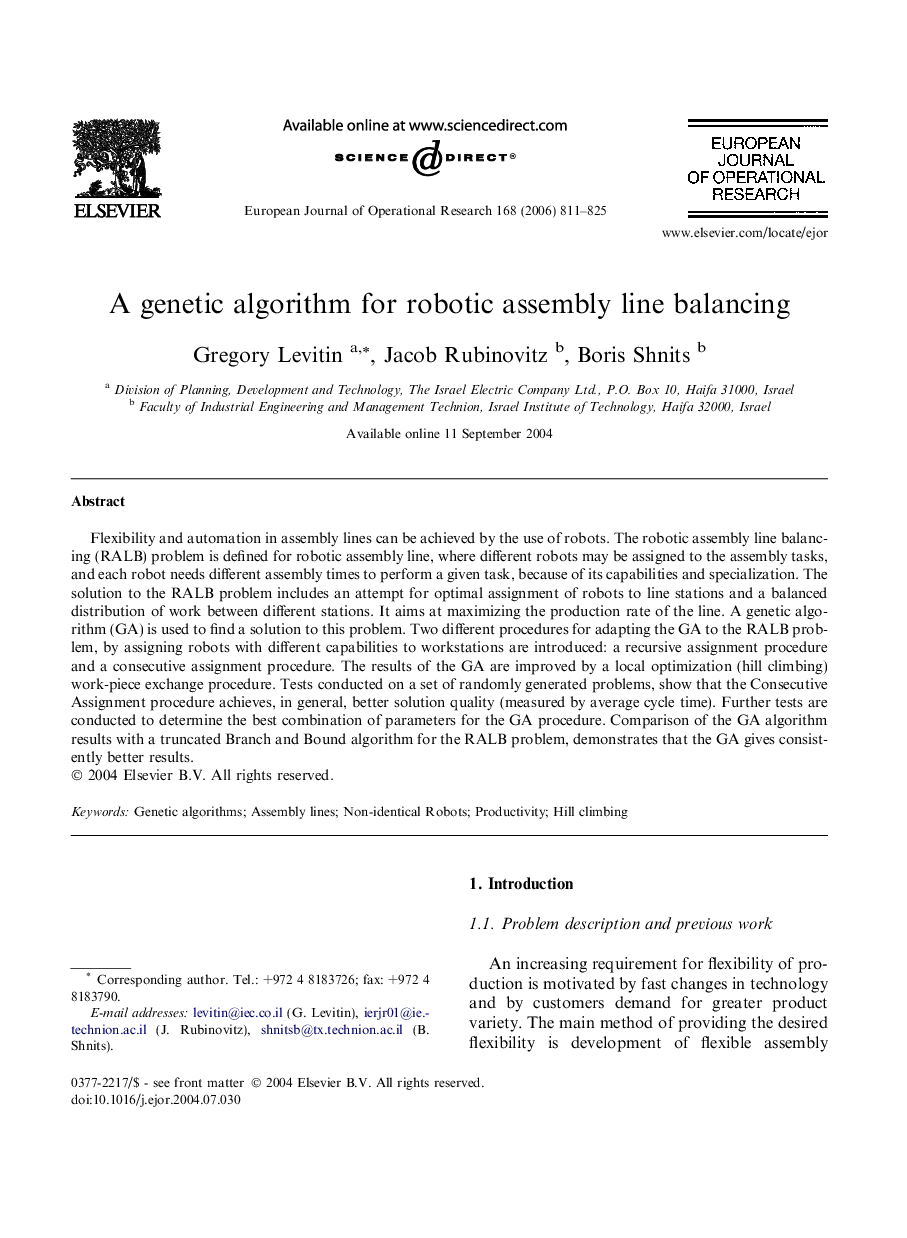| Article ID | Journal | Published Year | Pages | File Type |
|---|---|---|---|---|
| 483362 | European Journal of Operational Research | 2006 | 15 Pages |
Flexibility and automation in assembly lines can be achieved by the use of robots. The robotic assembly line balancing (RALB) problem is defined for robotic assembly line, where different robots may be assigned to the assembly tasks, and each robot needs different assembly times to perform a given task, because of its capabilities and specialization. The solution to the RALB problem includes an attempt for optimal assignment of robots to line stations and a balanced distribution of work between different stations. It aims at maximizing the production rate of the line. A genetic algorithm (GA) is used to find a solution to this problem. Two different procedures for adapting the GA to the RALB problem, by assigning robots with different capabilities to workstations are introduced: a recursive assignment procedure and a consecutive assignment procedure. The results of the GA are improved by a local optimization (hill climbing) work-piece exchange procedure. Tests conducted on a set of randomly generated problems, show that the Consecutive Assignment procedure achieves, in general, better solution quality (measured by average cycle time). Further tests are conducted to determine the best combination of parameters for the GA procedure. Comparison of the GA algorithm results with a truncated Branch and Bound algorithm for the RALB problem, demonstrates that the GA gives consistently better results.
